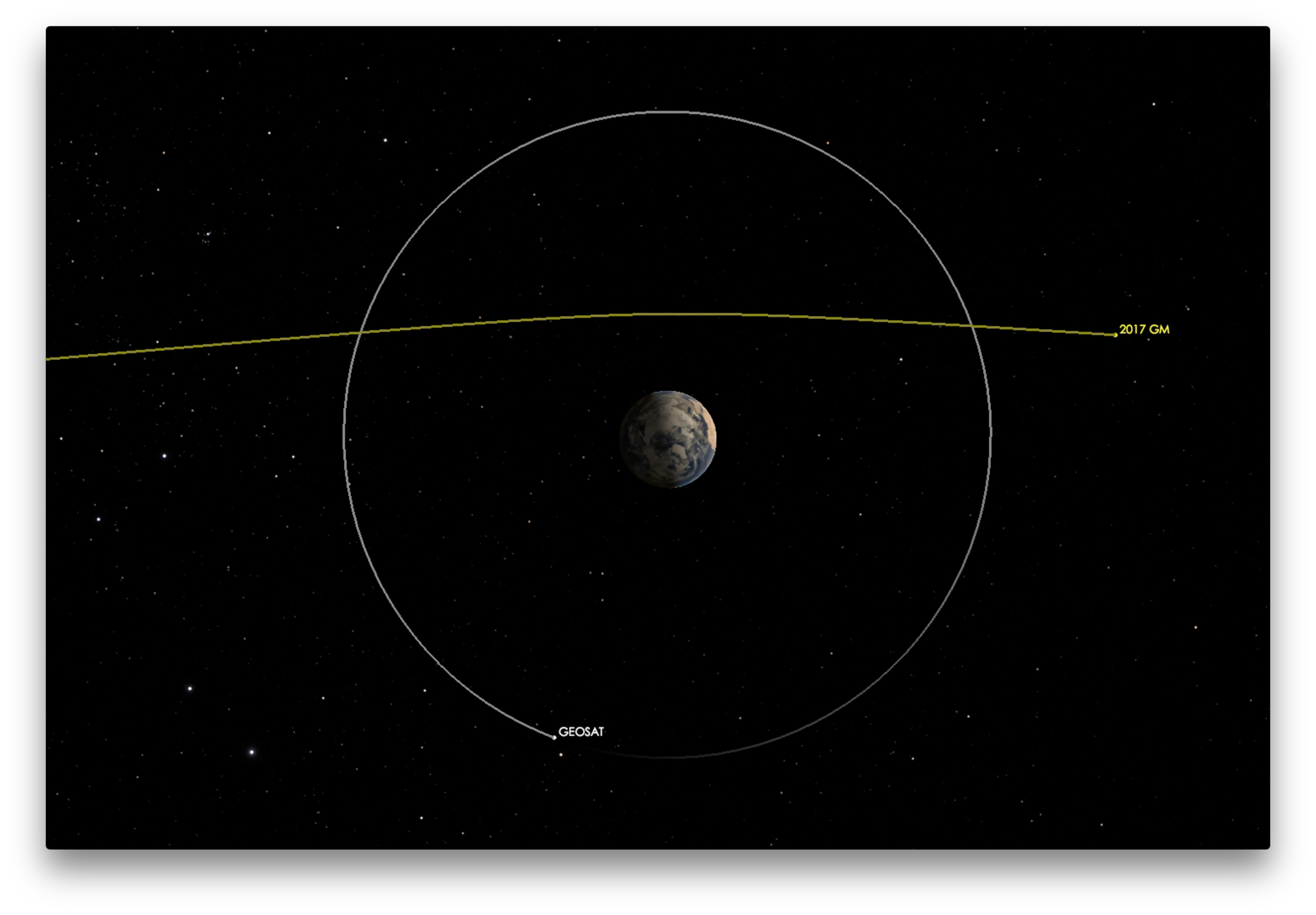It won’t hit the ground, neither will it enter the Earth atmosphere, but it remains an interesting object to observe, whether you are a meteor enthusiat or not!
Potentially Hazardous Asteroids (PHA) are interesting objects, as they are the one that may (or did) trigger huge meteors and meteorite falls (the last big one occured on February 18, 2013, over the Tcheliabinsk region) when they come to have an impacting trajectory. But most of them just pass, wave the earth, and go back into other Solar system regions…
This was the case with a small (3 to 6 m diameter) one, 2017 GM, which was discovered a few hours before it came as close as 10 000 km from our planet, on April 4th, 10h31min UT! It was then below the altitude of geostationary satellites, but still far enough not to enter our atmosphere. Had it done so, it would have been the source of a very bright meteor (but a smaller event than Tcheliabinsk one) potentially leading to meteorite recovery (may it have fallen on the ground, and not it the water).

It will be the case, again, with another bigger NEO (Near Earth Object), 2014 JO25, on April 19th. Discovered on May 2014 by the Catalina Sky Survey, this 0.6-1.4 km diameter asteroid will come to a minimal distance of 2 millions of kilometers from our planet (which is 200 times further than 2017 GM close approach), but as it’s bigger, it will be visible in small amateur astronomy instruments, as it should reach up to +10.5mag. So this time, do not use your naked eye to catch small interplanetary objects, but use a small reflector or refractor, an accurate ephemeris of 2014 JO25, and look at this small bright point rushing through the still stellar sky!




 You saw something bright and fast? Like a huge shooting star? Report it: it may be a fireball.
You saw something bright and fast? Like a huge shooting star? Report it: it may be a fireball.  You counted meteors last night? Share your results with us!
You counted meteors last night? Share your results with us!  You took a photo of a meteor or fireball? You have a screenshot of your cam? Share it with us!
You took a photo of a meteor or fireball? You have a screenshot of your cam? Share it with us!  You caught a meteor or fireball on video? Share your video with us!
You caught a meteor or fireball on video? Share your video with us!
One comment